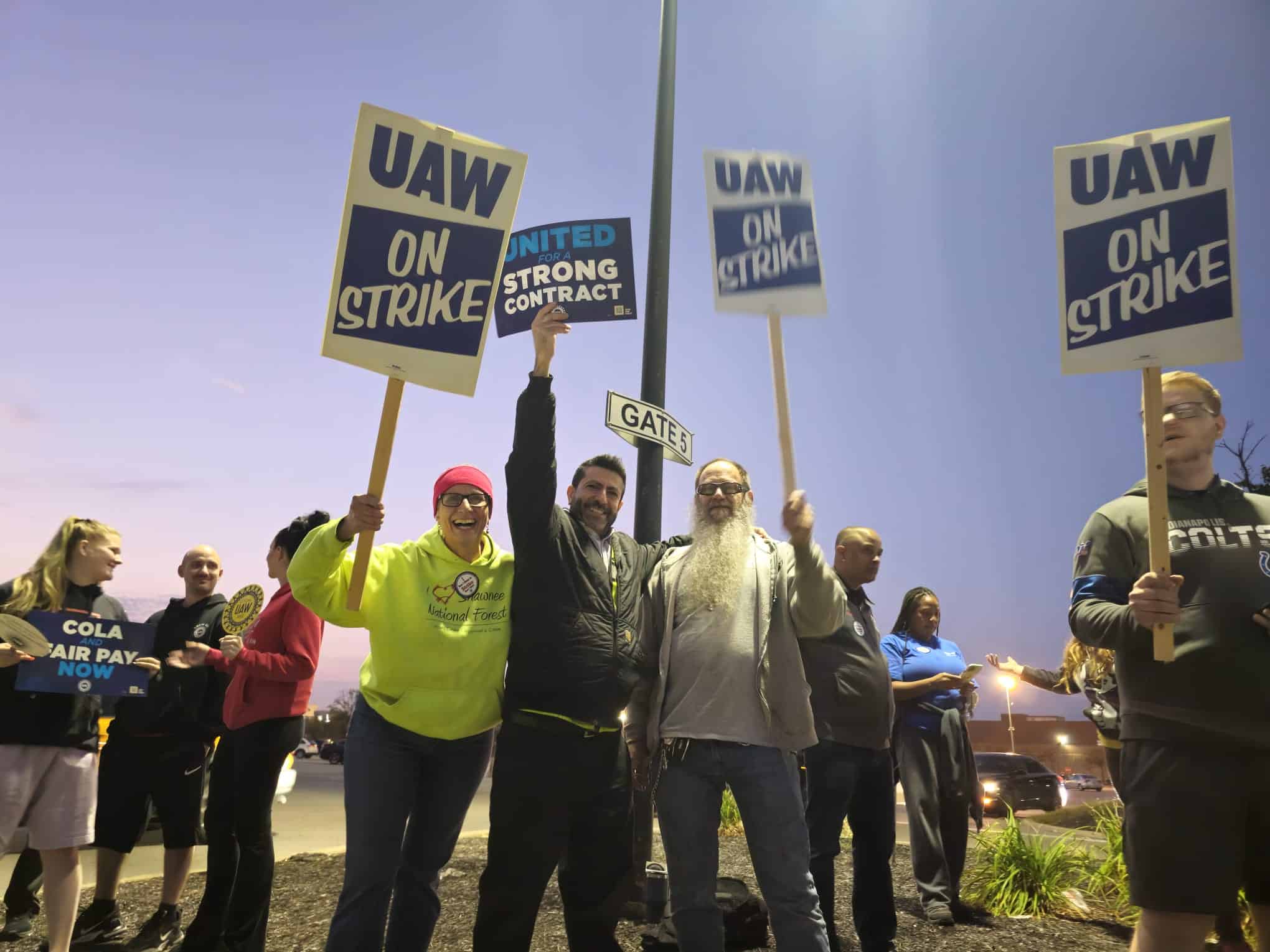The Fire of the Strike Ignites the United States

The social movement is intensifying at General Motors, Ford, and Stellantis, with now 34,000 striking employees.
For over a month now, United Auto Workers (UAW) has been engaging in a stalemate strike with American automakers. Far from a passing flare, this movement is turning into an uncontrollable blaze. The strike began in three plants, one from each group. The three targeted sites are assembly plants in Wayne, Michigan for Ford, Wentzville, Missouri for General Motors, and Toledo, Ohio for Stellantis-Chrysler. These three sites employ nearly 13,000 unionized workers out of the 150,000 represented by the powerful union, and produce over 20,000 vehicles weekly. Two new sites joined the strike two weeks ago, one belonging to Ford in Chicago, and the other owned by GM in Lansing, Michigan, bringing the total to 25,000 striking workers. This morning, an additional 8,700 employees at the Ford plant in Louisville, Kentucky, have joined the movement, bringing the total to 34,000 strikers.
Wages: the nerve of the war
The union is demanding notably a 35% wage increase over 4 years, while the automakers limited themselves to a 20% increase in recent negotiations, which were inevitably unsuccessful. The union is also calling for an end to the dual wage scale system. This measure was introduced in 2009 when General Motors and Chrysler were on the brink of bankruptcy. Thanks to it, employees with over 8 years of seniority are guaranteed a minimum pay of $32 per hour. Conversely, new employees currently earn about half that amount.
Towards a historic strike?
In the short term, manufacturers dismiss the risk of vehicle or parts shortages. The last major strike in 2019 only affected General Motors and lasted 40 days. Although the loss of revenue for the group, its brands, and subcontractors exceeded one billion dollars, inventory levels were sufficient to buffer activity and avoid disrupting dealerships. The situation is different four years later because automakers have learned—forced—to better manage their stocks to reduce costs, especially storage costs.
Shawn Fain, the new president of the UAW, is aware that he holds a strong position one year before the presidential election. His strongest supporter could be President Joe Biden, whose economic record faces criticism from all sides and who is accused of failing to curb inflation in the United States. Biden has shown support for the unions by posing with a strike picket line earlier this week, while assuring automakers of the state’s backing in case of a prolonged strike. By trying to please everyone, the state has only reinforced each side’s stance and ignited the spark for a historic strike.
According to observers, the initial consequences of the strike should soon become visible. An opportunity for foreign automakers and… Tesla, which has always managed to keep the UAW at bay from its factories.
This page is translated from the original post "Le Brasier de la grève enflamme les États-Unis" in French.
We also suggestthese articles:
Also read





